Comments / Questions (201)
![]() Angelique wrote:
Angelique wrote:
Ik heb 110 st opgezet en het boordje van 3cm gebreid. Ik heb de verdeling met een markeerdraad gedaan : na 16 - 21 -32 -21 -16 st. En meteen bij de eerste naald kom ik al niet uit, als ik alle steken optel dan kom ik aan 106 in plaats van 110 steken. Klopt dit of zit ik al meteen fout?
25.02.2021 - 18:08
![]() Clare Marsh wrote:
Clare Marsh wrote:
Hey. I’ve just done the rib. 90 stitches... obviously the arms are 21 stitches. So should it be 12+24+12 for the other sections? 11+21+22+21+11=86... thanks 😊
24.02.2021 - 21:56DROPS Design answered:
Dear Mrs Marsh, and there is one stitch with a marker at the transition of each piece so that 86 stitches +4 stitches with a marker= 90 sts. Happy knitting!
25.02.2021 - 07:29
![]() SUSANA JAP wrote:
SUSANA JAP wrote:
I am trying to work out my stitch out , I have just finished making the rib and it is now 3cm. I am increasing in the raglan and also knitting the A1 pattern, at end of making A1 (6 rows), my stitch count should be 130 (making large size) but somehow I am getting 126 stitch, what am I doing wrong here? thanks
20.02.2021 - 08:19DROPS Design answered:
Dear Susana, make sure you have increased 4 sts in each A.1 (this means + 8 sts) and you should have increased 3 times for raglan (= 3 x 8 sts = 24 sts), so that there are: 98 sts from neck + 8 sts increased in A.1 + 24 sts increased for raglan = 130 sts. Hope this will help. Happy knitting!
22.02.2021 - 07:53
![]() Marilyn wrote:
Marilyn wrote:
As for the measurements on the schematic, just making sure they are in centimeters, not inches...
18.02.2021 - 00:44DROPS Design answered:
Hi Marilyn, If you are using the US English, the measurements are in inches. If you are using the UK English, they are in cm. Happy knitting!
18.02.2021 - 07:28
![]() Julieta wrote:
Julieta wrote:
Hola! Que tal? No puedo visualizar el diagrama de las mangas, al imprimirlo tampoco aparece, es el mismo diagrama del modelo del cardigan? Si es así lo veo desde ahí, muchas gracias!
17.02.2021 - 14:03
![]() Maria wrote:
Maria wrote:
Porque no sale el grafico del dibujo de las mangas
15.02.2021 - 15:26DROPS Design answered:
Hola Maria, lo revisé y todo está bien. Si no sale, copia el grafico del dibujo a un otro archivo y imprimelo despues. Buen trabajo!
16.02.2021 - 10:41
![]() Roser Mitjà wrote:
Roser Mitjà wrote:
Perdon pero,, como es la manera de imprimir el patron? agradecida de antemano.
13.02.2021 - 22:36DROPS Design answered:
Hola, haga clic en el icono de la impresora en el patron. Buen trabajo!
15.02.2021 - 10:14
![]() Susanne Rienas wrote:
Susanne Rienas wrote:
Bitte überprüfen Sie die Anleitung. Die Ärmel werden doch gewiss nicht mit einer dünneren Nadel gestrickt? Muss es nach der Passe nicht mit Nadel Stärke 5 weiter gehen? Der Pullover ist wunderschön 🧡
13.02.2021 - 08:14DROPS Design answered:
Liebe Frau Rienas, stimmt, Anleitung wird korrigiert, Ärmel werden mit Nadel Nr 5 gestrickt, danke für den Hinweis. Viel Spaß beim stricken!
15.02.2021 - 12:37
![]() Bogusia wrote:
Bogusia wrote:
Dzień dobry. Czy jest jakaś nadzieja, że wśród rozmiarówki pojawi się wreszcie rozmiar XS? Zrobiłam już wiele Waszych swetrów i za każdym razem muszę modyfikować szerokości bo nawet rozmiar S jest na mnie za duży mimo, że jestem normalnej budowy.
12.02.2021 - 15:21DROPS Design answered:
Witaj Bogusiu, coraz częściej w naszych wzorach jest dostępny ten rozmiar. Myślę, że to stały trend. Pozdrawiamy i dziękujemy za zainteresowanie naszymi wzorami.
12.02.2021 - 16:03
![]() Margrethe wrote:
Margrethe wrote:
Sandy
09.02.2021 - 17:52
Bronze Summer Sweater#bronzesummersweater |
|||||||||||||||||||||||||
 |
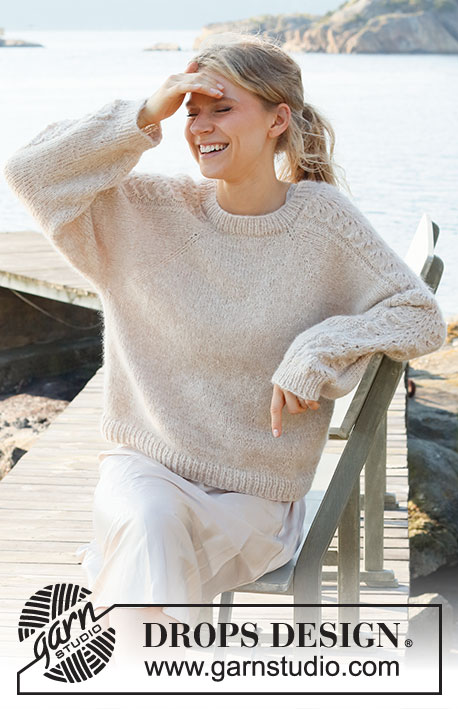 |
||||||||||||||||||||||||
Knitted sweater in DROPS Air. Piece is knitted top down with raglan and lace pattern on sleeves. Size: S - XXXL
DROPS 221-3 |
|||||||||||||||||||||||||
|
------------------------------------------------------- EXPLANATION FOR THE PATTERN: ------------------------------------------------------- PATTERN: See diagrams A.1 and A.2. RAGLAN: Increase 1 stitch on each side of 1 stitch in stockinette stitch (stitch with marker) in every transition between body and sleeves (= 8 stitches increased on round). Increase 1 stitch by making 1 yarn over. On next round work yarn overs twisted to avoid holes. Then work the new stitches in stockinette stitch. DECREASE TIP (applies to sleeves): Decrease 1 stitch on each side of marker thread as follows: Work until 3 stitches remain before marker thread and knit 2 together, knit 2 (marker thread is between these stitches), slip 1 stitch knitwise, knit 1, pass slipped stitch over stitch worked. BIND-OFF TIP: To avoid a tight bind-off edge you may use a larger needle size. If this also is too tight, work a 1 yarn over after approx. every 4th stitch while binding off (bind off yarn overs as regular stitches). ------------------------------------------------------- START THE PIECE HERE: ------------------------------------------------------- SWEATER - SHORT OVERVIEW OF THE PIECE: Work yoke in the round on circular needle from mid back, top down. AT THE SAME TIME increase for raglan. Now divide yoke for body and sleeves. Body is worked in the round on circular needle, top down. Work sleeves in the round on double pointed needles/short circular needle, top down. YOKE: Cast on 90-94-98-102-106-110 stitches on circular needle size 4 mm = US 6 with Air. Knit 1 round. Work rib (= knit 1/purl 1) over all stitches for 3 cm = 1⅛". Switch to circular size 5 mm = US 8 and insert 1 marker here, now measure piece from here. Insert 4 marker threads in piece as follows (without working the stitches): Count 11-12-13-14-15-16 stitches (= half back piece), insert 1 marker thread in next stitch, count 21 stitches (= sleeve), insert 1 marker thread in next stitch, count 22-24-26-28-30-32 stitches (= front piece), insert 1 marker thread in next stitch, count 21 stitches (= sleeve), insert 1 marker thread in next stitch, 11-12-13-14-15-16 stitches remain on row after last marker thread (= half back piece). Work in stockinette stitch over stitches on front piece and on back piece, and A.1 (= 21 stitches) over stitches on each sleeve, AT THE SAME TIME on first round start increase for RAGLAN in every transition between body and sleeves – read explanation above. Continue increases for raglan every other round. When A.1 has been worked 1 time vertically there are 122-126-130-134-138-142 stitches on round. Continue with A.2 (= 25 stitches) over stitches in A.1 with stockinette stitch over front piece and back piece, and continue with increase for raglan every other round until increase has been done 22-25-27-29-33-36 times in total on each side of the 4 stitches with marker threads = 274-302-322-342-378-406. REMEMBER THE KNITTING GAUGE! After last increase in raglan work without increases until piece measures 20-23-25-27-31-34 cm = 8"-9"-9¾"-10⅝"-12¼"-13⅜" from marker. Work next round as follows: Work the first 34-38-41-44-49-53 stitches (= half back piece), slip the next 69-75-79-83-91-97 stitches on a stitch holder for sleeve, cast on 6-6-6-8-10-12 new stitches on needle (= in the side under sleeve), work the next 68-76-82-88-98-106 stitches (= front piece), slip the next 69-75-79-83-91-97 stitches on a stitch holder (= sleeve), cast on 6-6-6-8-10-12 new stitches on needle (= in the side under sleeve), work the remaining 34-38-41-44-49-53 stitches (= half back piece). NOW MEASURE PIECE FROM HERE! BODY: = 148-164-176-192-216-236 stitches. Continue in stockinette stitch until piece measures 27-26-26-26-24-23 cm = 10⅝"-10¼"-10¼"-10¼"-9½"-9" from division. Switch to circular needle size 4 mm = US 6. Work rib (= purl 1/knit 1) over all stitches. Continue rib like this for 4 cm = 1½". Loosely bind off with knit over knit and purl over purl, read BIND-OFF TIP. Sweater measures approx. 56-58-60-62-64-66 cm = 22"-22¾"-23⅝"-24⅜"-25¼"-26" from shoulder. SLEEVE: Slip the 69-75-79-83-91-97 stitches from stitch holder in one side of piece on a short circular needle/double pointed needles size 5 mm = US 8 and pick in addition up 1 stitch in each of the 6-6-6-8-10-12 stitches cast on in the side under sleeve = 75-81-85-91-101-109 stitches. Insert 1 marker thread in the middle of the 6-6-6-8-10-12 stitches under sleeve and move the marker thread upwards when working, it is used for decrease later. Begin round at the marker thread and continue with A.2 and stockinette stitch in the round. When piece measures 3 cm = 1⅛" from division, decrease 2 stitches mid under sleeve - read DECREASE TIP. Decrease like this every 3½-3-2-1½-1-1 cm = 1¼"-1⅛"-¾"-½"-⅜"-⅜" 10-11-13-16-19-21 times in total = 55-59-59-59-63-67 stitches. Continue until piece measures 38-35-34-32-29-26 cm = 15"-13¾"-13⅜"-12½"-11⅜"-10¼" from division - or desired length (shorter measurements in the larger sizes because of longer yoke). Work 1 round while decreasing 11 stitches evenly over stitches in A.2 = 44-48-48-48-52-56 stitches. Switch to double pointed needles size 4 mm = US 6 and work rib in the round = knit 1/purl 1 for 4 cm = 1½". Bind off with knit over knit and purl over purl (to avoid a tight bind-off edge use double pointed needles size 4 mm = US 6). Work the other sleeve the same way. |
|||||||||||||||||||||||||
Diagram explanations |
|||||||||||||||||||||||||
|
|||||||||||||||||||||||||
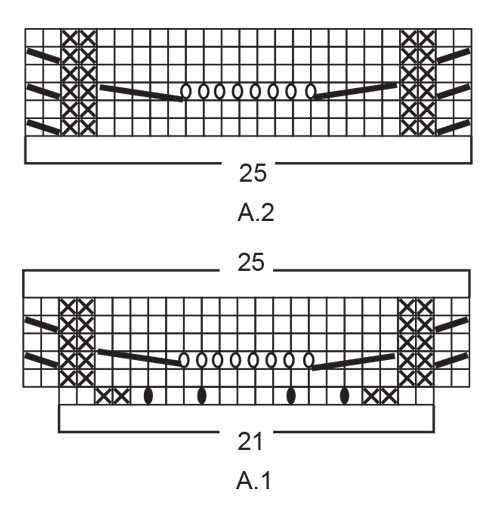 |
|||||||||||||||||||||||||
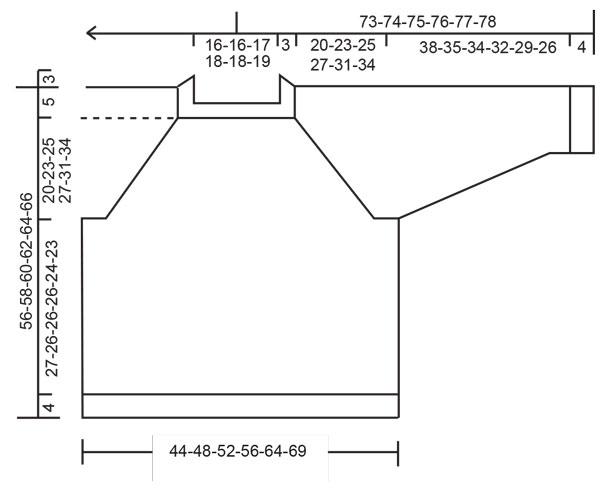 |
|||||||||||||||||||||||||
Have you finished this pattern?Tag your pictures with #dropspattern #bronzesummersweater or submit them to the #dropsfan gallery. Do you need help with this pattern?You'll find 30 tutorial videos, a Comments/Questions area and more by visiting the pattern on garnstudio.com. © 1982-2025 DROPS Design A/S. We reserve all rights. This document, including all its sub-sections, has copyrights. Read more about what you can do with our patterns at the bottom of each pattern on our site. |
|||||||||||||||||||||||||







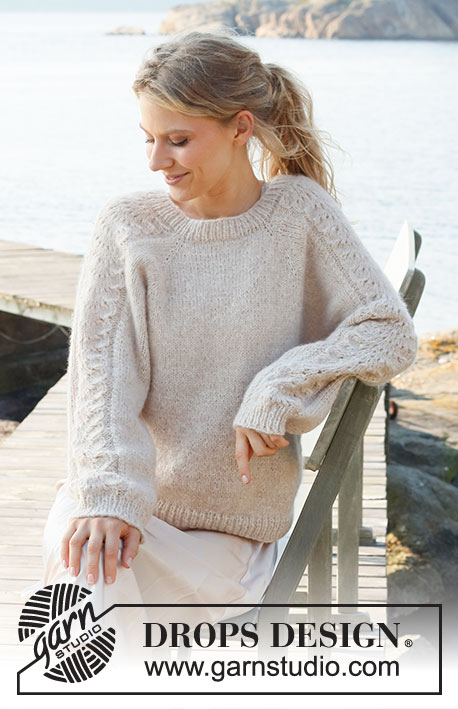
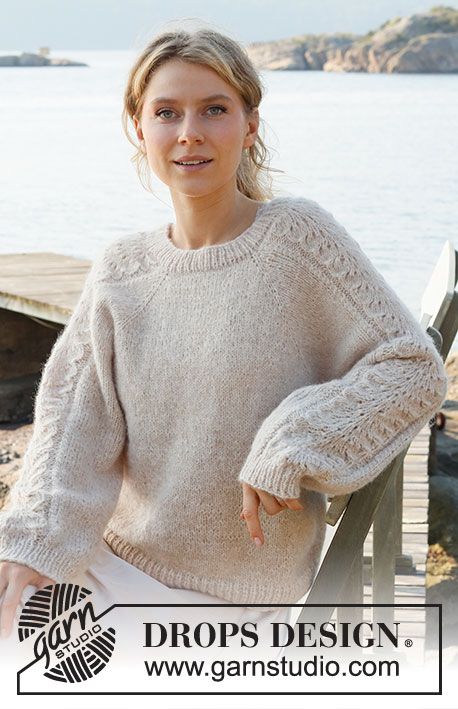


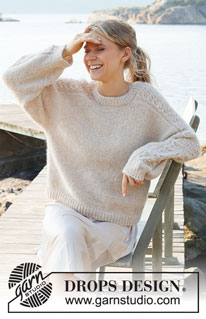
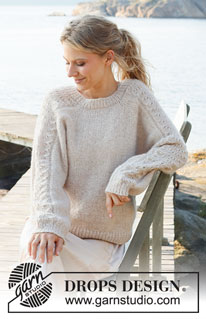
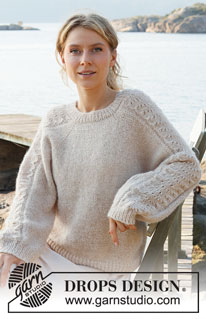
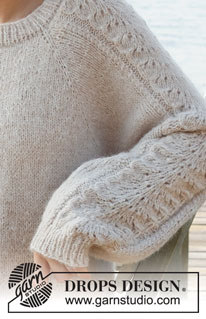






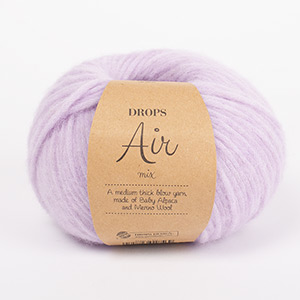
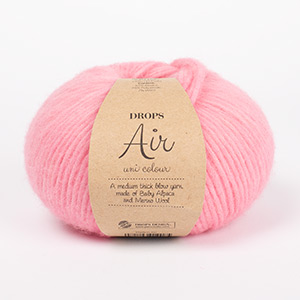






















































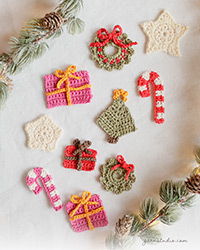

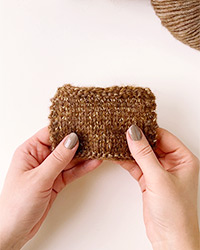
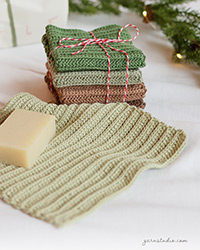
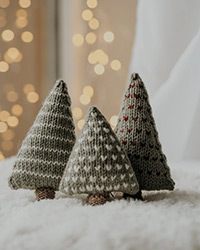
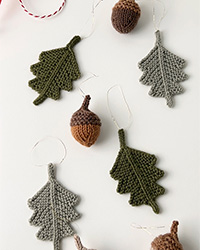
Post a comment to pattern DROPS 221-3
We would love to hear what you have to say about this pattern!
If you want to leave a question, please make sure you select the correct category in the form below, to speed up the answering process. Required fields are marked *.